Iron Chromets and his empire
“Iron Lame” (right leg was struck around the kneecap) was an interesting personality, in which cruelty was combined with great intelligence, love of art, literature and history. Timur was a man very brave and restrained. It was a real warrior - strong and physically developed (a real athlete). A sober mind, the ability to make the right decisions in difficult situations, the foresight and talent of the organizer allowed him to become one of the greatest rulers of the Middle Ages.
The full name of Timur was Timur ibn Taragay Barlas - Timur is the son of Taragay from Barlasov. In the Mongolian tradition, Temir means "iron." In the medieval Russian chronicles it was called as Temir Aksak (Temir - “iron”, Aksak - “chromets”), that is, Iron Chromets. In various Persian sources, the iris nickname Timur-e Liang is often found - “Timur Lame”. It turned into Western languages like Tamerlane.
Tamerlan was born on April 8 (according to other data - April 9 or March 11) 1336 of the year in the city of Kesh (later named Shakhrisabz - “The Green City”). The whole area was called Maverannahr (in translation - “what is beyond the river”) and was located between the Amudarya and Syrdarya rivers. It had been part of the Mongol (Mughal) empire for a century. The word "Mongols", in the original version of "Mogul" comes from the Korneslova "could, we can" - "a husband, a powerful, powerful, powerful." From this root comes the word "Mughal" - "the great, powerful." A representative of the Turkic Mongols, the Mughal was also the family of Timur.
It is worth noting that the Mongol Mongols of that time were not Mongoloids, like the modern inhabitants of Mongolia. Tamerlan himself belonged to the so-called South Siberian (Turanian) race, that is, a mixture of Caucasians and Mongoloids. The mixing process then took place in the south of Siberia, in Kazakhstan, Central Asia and Mongolia. The Europoids (Aryans-Indo-Europeans), who inhabited these areas for thousands of years, and gave impetus to the development of India, China and other regions, mixed with the Mongoloids. They will completely dissolve in the Mongoloid and Turkic ethno-massifs (the Mongoloid genes are dominant), transferring to them a part of their traits (including militancy). However, in the XIV century, the process has not yet been completed. Therefore, Timur had light (red) hair, a thick red beard, and anthropologically related to the South Siberian race.
Timur’s father, a small feudal lord, Taragai (Turgai), was descended from the Barlas tribe, who at one time was among the first united by Temuchin-Genghis Khan. However, he did not belong to the direct descendants of Temuchin, so that later Tamerlan could not claim the khan's throne. The founder of the Barlas family was considered to be the great feudal lord Karachar, who at one time was an assistant to the son of Genghis Khan Chagatai. According to other sources, Tamerlan's forefather was Yardamcha-Barlas - allegedly the nephew of Habul-Khan, great-grandfather of Genghis Khan.
Little is known about the childhood of the future great conqueror. Timur's childhood and youth passed in the Kesh mountains. In his youth, he loved hunting and horse racing, javelin throwing and archery, and he had a penchant for war games. There is a legend about how once a ten-year-old Timur drove the sheep home, and with them managed to drive the hare, not allowing him to fight off the herd. At night, Taragay, frightened by his too fast-moving son, cut the tendons on his right leg. Allegedly then, Timur and became lame. However, this is only a legend. In fact, Timur was wounded in one of the clashes during his stormy youth. In the same fight, he lost two fingers on his hand, and all his life Tamerlane suffered from severe pain in a crippled leg. Perhaps this could be associated with flashes of rage. Thus, it is precisely known that the boy and the lad were distinguished by great dexterity and physical strength, from the 12 years he took part in military clashes.
The beginning of political activity
The Mongolian empire was no longer a single state, it broke up into ulus-fiefdoms, there were constant internecine wars that were not spared by Maverannahr, which was part of the Chagatai ulus. In 1224, Genghis Khan divided his state into four ulus, according to the number of sons. The second son Chagatay went to Central Asia and nearby territories. Ulus Chagatay covered first of all the former power of the Karakitas and the land of the Naimans, Maverannahr with the south of Khorezm, most of the Seven Rivers and East Turkestan. Here, since 1346, the power actually belonged not to the Mongol khans, but to the Turkic emirs. The first head of the Turkic emirs, that is, the ruler between the Amudarya and Syrdarya rivers, was Kazgan (1346 – 1358). After his death, serious unrest began in Maverannahr. Mongolian (Mogul) Khan Toglug-Timur, who in 1360 seized the region, invaded the region. Shortly after the invasion, his son Ilyas-Khoji was appointed governor of Mesopotamia. Part of the Central Asian grandee took refuge in Afghanistan, the other - voluntarily submitted to Toglugu.
Among the latter was the leader of one of the detachments - Timur. He began his activity as an ataman of a small detachment (a gang), with whom he supported one or the other side in the strife, robbed, attacked small villages. The squad gradually grew to 300 riders, with whom he entered the service of the ruler of Kesh, the head of the Barlas tribe, Haji. Personal courage, generosity, ability to understand people and choose their assistants and pronounced leadership qualities brought Timur wide popularity, especially warriors. Later, he received support from Muslim merchants who began to see the former gangster of the protector from other gangs and the true Muslim (Timur was religious).
Timur was approved by the commander of the Kashkadarya tumen, the ruler of the Kesh region and one of the assistants of the Mogul prince. However, he soon fell out with the prince, fled after the Amu Darya to the Badakhshan mountains and joined with his own forces the ruler of Balkh and Samarkand, Emir Hussein, the grandson of Kazgan. He strengthened his union by marrying the daughter of the Emir. Timur and his warriors began to raid the land of Hoxha. In one of the fights, Timur was crippled, becoming “the Iron Chromez (Aksak-Timur or Timur-Leng). The fight against Ilyas-Khoji ended in 1364, with the defeat of the latter’s forces. The uprising of the inhabitants of Maverannahr helped, which was dissatisfied with the brutal uprooting of Islam by pagan warriors. The Mughals were forced to retreat.
In 1365, the army of Ilyas-Khoji defeated the forces of Timur and Hussein. However, the people again revolted and expelled the Moguls. Headed the Serbedar uprising (Persian "hanged", "desperate"), the dervish supporters who preached equality. In Samarkand, a national government was established, the property of the rich strata of the population was confiscated. Then the rich turned to Hussein and Timur for help. In the spring of 1366, Timur and Hussein put down an uprising, executing Serbedar leaders.
"Great Emir"
Then there was a rift in the relationship between the two leaders. Hussein nursed plans to occupy the post of high emir of the Chagatai ulus, like his grandfather Kazagan, who seized this post by force during the times of Kazan Khan. Timur was on his way to sole authority. In turn, the local clergy acted on Timur’s side.
In 1366, Tamerlane rebelled against Hussein, in 1368, he reconciled with him and received Kesh again. But in 1369, the struggle continued, and thanks to successful military actions Timur strengthened in Samarkand. In March 1370, Hussein was captured in Balkh and killed in the presence of Timur, albeit without his direct orders. Hussein ordered one of the commanders to be killed (because of blood feud).
10 On April, Timur took the oath from all the commanders of Maverannahr. Tamerlane said that he was going to revive the power of the Mongolian empire, declared himself a descendant of the mythical ancestor of the Mongols Alan-Coa, although, being a non-Genesis, he was content with the title only of the “great emir”. During his time there was a “zits-khan” - a real Chingisid Suyurgatmysh (1370 – 1388), and then the son of the latter Mahmoud (1388 – 1402). Both "Khan" did not play any political role.
The capital of Samarkand became the capital of the new ruler, for political reasons Timur moved the center of his state, although initially he was inclined to the Shahrisabz variant. According to legend, choosing a city that was to become a new capital, the great emir ordered the slaughter of three sheep: one in Samarkand, the other in Bukhara, and the third in Tashkent. Three days later, the meat in Tashkent and Bukhara was rotten. Samarkand has become "the home of the saints, the birthplace of the purest Sufis and a gathering of scientists." The city has really turned into the largest cultural center of a huge region, “Shining Star of the East”, “Pearl of Great Price”. Here, as well as in Shahrisabz, the best architects, builders, scientists, writers from all countries and regions conquered by the emir were brought. An inscription was written on the portal of the beautiful Ak-Saray palace in Shakhrisabz: “If you doubt my power, see what I built!” Ak-Saray built 24 of the year, almost until the death of the conqueror. The arch of the entrance portal Ak-Saray was the largest in Central Asia.
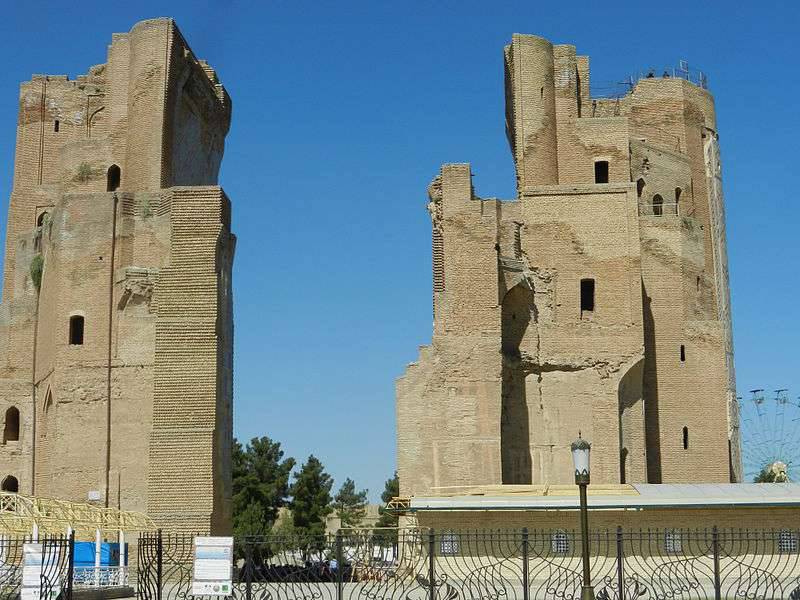
Ak-Saray
In fact, architecture was the passion of a great statesman and commander. Among the outstanding works of art that were supposed to emphasize the power of the empire, the Bibi Khanum Mosque (aka Bibi-Khanym; built in honor of Tamerlane’s wife) has been preserved and amazed. The mosque was erected by order of Tamerlane after his victorious campaign in India. It was the largest mosque in Central Asia, in the courtyard of the mosque 10 thousands of people could pray at the same time. Also noteworthy is the Gur-Emir mausoleum - the family tomb of Timur and the heirs of the empire; the architectural ensemble of Shakhi Zinda - the ensemble of the mausoleums of the Samarkand nobility (all this in Samarkand); Dorus-Siadat mausoleum in Shakhrisabz - a memorial complex first for Prince Jahongir (Timur loved him and prepared him as heir to the throne), later he began to act as a family crypt for a part of the Timurid dynasty.
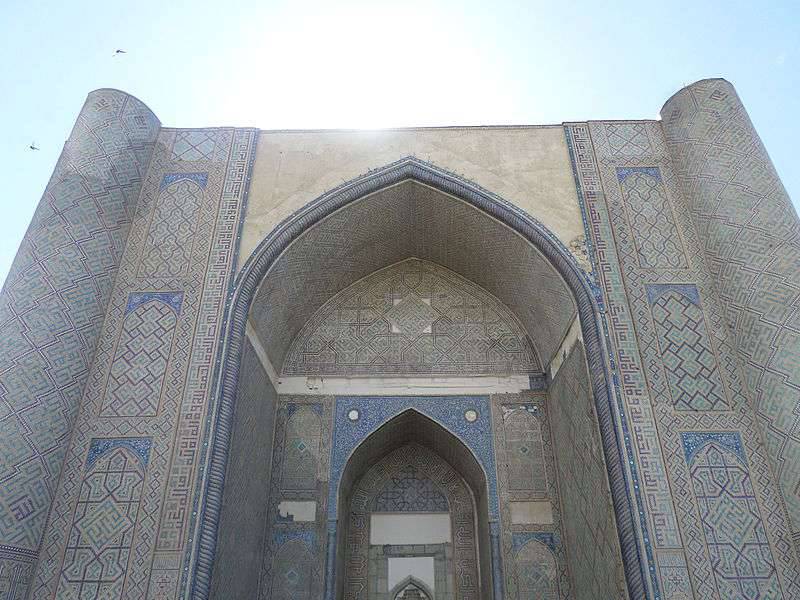
Bibi-Khanym Mosque
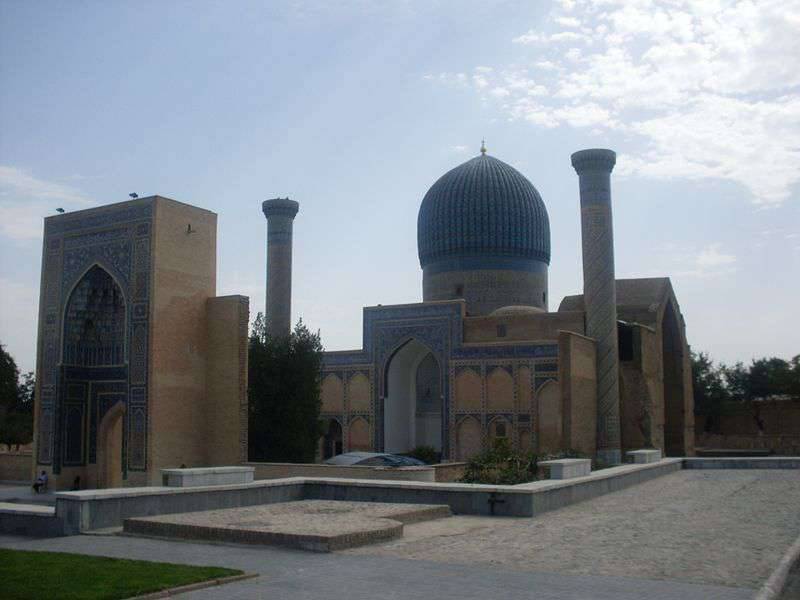
Mausoleum Gur-Emir
The great commander did not receive a school education, but he had a good memory, he knew several languages. A contemporary and captive of Tamerlane Ibn Arabshah, who knew Tamerlane personally from 1401, reports: "As for the Persian, Turkic and Mongolian, he knew them better than anyone else." Timur liked to talk with scientists, in particular, to listen to reading historical writings, at the court there was even a position of “reader of books”; tales of valiant heroes. The great emir rendered honor to Muslim theologians and hermits-dervishes, did not interfere in the management of the property of the clergy, mercilessly fought with numerous heresies - he attributed to them philosophy and logic, which he forbade to do. Christians of the captured cities were to rejoice if they remained alive.
A special cult of Ahmed Yasawi, a Sufi teacher, was introduced into Timur’s reign in his subordinate territories (primarily Maverannakhr). The commander claimed that he introduced special worship to this outstanding Sufi, who lived in the 12th century, after seeing at his grave in Tashkent, in which Teacher appeared to Timur. Yasavi allegedly appeared to him and ordered him to memorize a poem from his collection, adding: “In a difficult moment, remember this poem:
You, who are voluntarily free to turn a dark night into a day.
You, who can turn the whole earth into a fragrant flower garden.
Help me in the difficult task ahead of me and make it easy.
You who make everything easy. ”
Many years later, when, during a fierce battle with the army of the Ottoman Sultan Bayezid, Tamerlane's cavalry rushed into the attack, he repeated these lines seventy times, and the decisive battle was won.
Timur was concerned about the observance of religion by his subjects. In particular, this led to the emergence of a decree on the closure of places of entertainment in large trading cities, although they brought large incomes to the treasury. True, the great emir himself did not deny himself pleasures, and only before his death he ordered the destruction of the accessories of feasts. For his campaigns, Timur found religious reasons. So, it was necessary to urgently teach the heretics in the Shiite Khorasan, to revenge the Syrians for the insults inflicted on the family of the prophet, then to punish the population of the Caucasus for drinking wine. Vineyards and fruit trees were destroyed in the occupied lands. Interestingly, afterwards (after the death of the great warrior), the mullahs refused to recognize him as a devout Muslim, as he "honored the laws of Genghis Khan above religious".
Tamerlane devoted all 1370s to the struggle against the khans of Dzhent and Khorezm, who did not recognize the power of Suyurgatmish Khan and the great Emir Timur. It was restless on the southern and northern frontiers of the border, where anxiety brought Mogolistan and the White Horde. Mogulistan (Mogul Ulus) is a state that formed in the middle of the XIV century on the territory of South-Eastern Kazakhstan (south of Lake Balkhash) and Kyrgyzstan (coast of the Issyk-Kul lake) as a result of the collapse of the Chagatai ulus. After the capture of Sygnak by Urus Khan and the transfer of the capital of the White Horde to him, the lands subject to Timur were in even greater danger.
Soon, the authority of Emir Timur was recognized by Balkh and Tashkent, however, the Khorezm rulers continued to resist the Chagatai ulus, relying on the support of the rulers of the Golden Horde. In 1371, the governor of Khorezm attempted to capture southern Khorezm, which was part of the Chagatai ulus. Timur made five trips to Khorezm. The capital of Khorezm, the rich and glorious Urgench, fell in 1379. Timur waged a stubborn struggle with the lords of Mogolistan. From 1371 to 1390, the emir Timur made seven trips to Mogolistan. In 1390, the Mogulistan ruler Kamar ad-din was finally defeated, and Mogolistan ceased to threaten the power of Timur.
Further gains
Having established itself in Maverannakhr, Zhelezny Khromets embarked on large-scale conquests in other parts of Asia. Timur's conquest of Persia in 1381 began with the capture of Herat. The unstable political and economic situation in Persia at the time contributed to the invader. The revival of the country, which began during the Ilkhanov rule, again slowed down with the death of the last representative of the Abu Said (1335) clan. In the absence of an heir, the rival dynasties took turns taking over the throne. The situation was aggravated by a clash between the dynasties of the Mongol Jalayrids, who ruled in Baghdad and Tabriz; the Persian-Arabic tribe of Muzafarids, who were in power in Fars and Isfahan; Harid Kurtami in Herat. In addition, local religious and tribal alliances, such as the Serbedars (rebelled against the Mongolian yoke) in Khorasan and the Afghans in Kerman, and small princes in the border areas participated in the civil war. All these warring dynasties and principalities could not jointly and effectively oppose the army of Timur.
Khorasan and all of East Persia fell under its onslaught in 1381 – 1385. In the western part of Persia and the adjacent areas of the conqueror made three large campaign - a three-year (from 1386 year), five-year (from 1392 year) and seven-year (from 1399 year). Fars, Iraq, Azerbaijan and Armenia were conquered in 1386 – 1387 and 1393 – 1394; Mesopotamia and Georgia came under the rule of Tamerlane in 1394, although Tiflis (Tbilisi) resigned as far back as 1386. Sometimes the vassal oaths were brought by local feudal lords, often at the head of the conquered areas became close commanders or relatives of the conqueror. Thus, in 80, Timur’s son Miranshah was appointed the ruler of Khorasan (later the Transcaucasus was transferred to him, and then the west of his father’s power), Fars was ruled for a long time by another son, Omar, finally, in 1397, Timur appointed his youngest son - Shahrukh.
It is not known what pushed Timur to conquest. Many researchers are inclined to the psychological factor. They say that the emir was driven by irrepressible ambition, as well as mental problems, including those caused by a leg wound. Timur suffered from severe pain and they caused outbursts of rage. Timur himself said: "The whole space of the inhabited part of the world is not worth having two kings." In fact, this is a call for globalization, which is also relevant in the modern world. Also acted Alexander of Macedon and the rulers of the Roman Empire, Genghis Khan.
It is worth noting such an objective factor as the need to feed and maintain a large army (its maximum number reached 200 thousand soldiers). In peacetime, it was impossible to maintain a large army, tens of thousands of professional warriors. The war fed itself. The troops ravaged all the new areas and were pleased with their ruler. A successful war allowed to channel the energy of the nobility and the warriors, to keep them in obedience. As Lev Gumilev wrote: “Having started a war, Timur had to continue it - the war fed the army. Having stopped, Timur would have remained without an army, and then without a head. ” The war allowed Timur to receive great wealth, take out the best craftsmen from various countries and equip the heart of his empire. The emir brought not only material booty into the country, but also brought prominent scientists, craftsmen, artists, architects with him. Timur cared primarily for the prosperity of his native Maverannahr and for raising the splendor of his capital, Samarkand.
Tamerlane, unlike many other conquerors, did not always seek to create a strong administrative system on the conquered lands. Timur's empire rested exclusively on military power. He chose civilian officials apparently much worse than commanders. At least, numerous cases of punishment for the extortion of the highest dignitaries in Samarkand, Herat, Shiraz, and Tabriz can testify to this. As well as the uprising of the local population, caused by the arbitrariness of the administration. In general, the inhabitants of the new conquered areas of Tamerlane were extremely interested in it. His armies smashed, crushed, robbed, killed, leaving a bloody trail of tens of thousands of dead people. He sold into slavery the population of entire cities. And then he returned to Samarkand, where he brought the treasures of the whole world, the best masters and played chess.
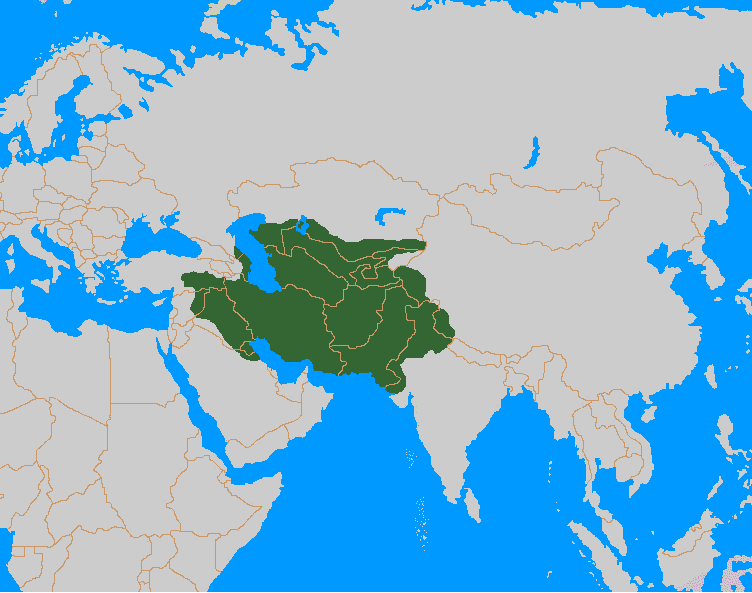
Empire Timur
To be continued ...
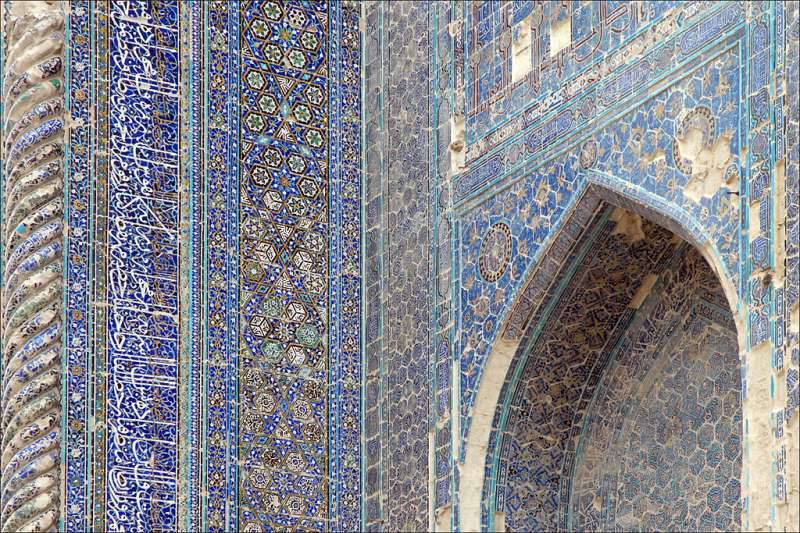
Information